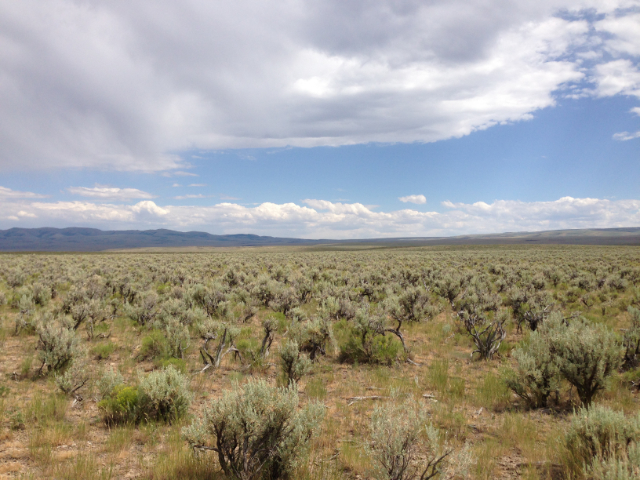Native American tribes vie for control of ancient remains found in Idaho's high desert plains

Some mysteries don't need to be solved. They need to be laid to rest.
In spring of 2017, an Idaho Department of Fish and Game employee was going about his 'do you have a license to hunt that thing' duties, in the wilds outside the city of Mountain Home, Idaho. As he kicked through the grass and dust of the high desert plains, he came upon partially buried human skeletal remains. The Fish and Game employee called in the cops, who in turn, cordoned off the area around the find as a crime scene. The condition of the bones was such that they could have been the remains of a double homicide that'd taken place in recent decades, or old enough to belong to settlers who would have been passing through the area as far back as the 19th century, as part of their trek down the Oregon Trail.
Five days after the bones were discovered, the police returned to where the bones had been discovered. They brought archaeologists with them to assist in the delicate task of extracting the remains from the earth and, since they were there, help look for any other remains that might be hanging around the area.
They found more.
There was no way to identify the bones as belonging to one society or another--not a single cultural artifact was found in the area. With no clues as to who the bones may have belonged to, the cops had the bones shipped off to a lab for carbon dating. A couple of decades old or maybe dating back to the 19th century? Man were they off the mark. By carbon dating the remains, it was discovered that the bones they'd uncovered belonged to two people--a young adult and a child--who lived at some point between the 1400s and 1600s. Bullshit, cried the investigators! Run the test again! At a different lab!
So they did.
Similar results were returned. With the data that had been procured, they were able to narrow down the dates that the pair had been alive even further: between 1436 and 1522. During that time, the only people who would have been in that part of Idaho, that anyone knows of, would have been the natives of the region. With this being the case the remains were handed over to the U.S Bureau of Land Management, who in turn, are supposed to provide the remains to a Native American tribe in the area where the find was made as per the Native American Graves Protection Act.
According to the Associated Press, anthropologists were kind of pissed off at the situation:
The tribes don't let researchers conduct tests on remains of ancestors and anthropologists say the unique nature of the find means that experts are losing an opportunity to learn more about how Native Americans lived in a place where the first documented visit by outsiders was in 1805... evidence of how the two had lived might have been found by trained experts if the area had also been treated from the onset as a possible anthropological site. There are fewer than a dozen known Native American burial sites on the Snake River Plain, and this site was unique because none of the other sites have had the remains of more than one person.
Tough shit. If someone dug up my great, great grandfather's bones and wanted to keep poking at them instead of letting me bury them with respect, I'd likely say 'nah,' too.
Without there being any cultural artifacts to point at who the remains of the individuals found may have been during their lives, the Bureau of Land Management opted to let Native American tribes traditionally associated with the area where the bones were found, to petition for the right to take possession of them. Three different tribes--Shoshone-Bannock Tribes, Nez Perce Tribe and the Shoshone-Paiute Tribes--expressed interest in repatriating the remains.
Over a year after the remains were initially stumbled upon, the Bureau of Land Management decided that the bones were to be shared by the inter-related Shoshone-Bannock and Shoshone-Paiute Tribes, and should be handed over to them this summer... provided no other tribes in the area decide to make their own claim to the remains. If anyone else does want to throw their hats in the ring, they have until June 28 to do so. In the meantime, the remains, are being stored in a secure federal facility.
Image via Wikipedia